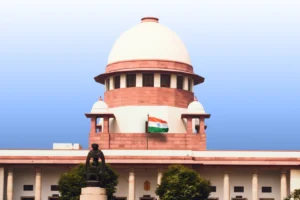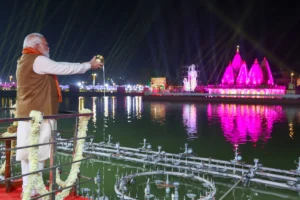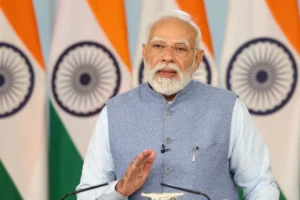
Its a wake up call for India and Indian Government
Where did the beauty of your travels to Delhi go?
I have started passing through the streets with my head bowed down
Delhi, which was once shining and bustling with gold, has been made sick by poisonous air and pollution. Like the last many years, this time too the month of October and November became frightening for Delhi. During this period, air pollution reaches dangerous levels creating new records. This problem of air pollution is no longer limited to Delhi, most parts of the country are struggling with it.
Like every year, this time too this problem became fatal in the country’s capital Delhi and surrounding areas. The problems of those who were ill increased but those who were healthy started falling ill. Even breathing seems like a task in this polluted air. The situation became such that the hearing of the case started in the Supreme Court. In the hearing, the Supreme Court has given strict instructions to the governments of Punjab, Haryana, UP, and Rajasthan to reduce pollution and said- “We want it to be stopped. We don’t know how you’ll do it, but it’s your job to stop it. Take action immediately. The central government should focus on reducing paddy cultivation and growing other crops.”
There is a need to take concrete steps to solve this problem that comes up every year in the month of October-November, but no such initiative is being taken anywhere at the ground level. Although the National Green Tribunal had taken cognizance of air pollution in October itself but it failed to implement its guidelines. The level of air pollution these days narrates the story of this failure. It is rightly said that after water starts to flow above the head, that is not time to teach swimming. That is time to save lives. When will our responsible institutions and government understand this?
The Delhi government has been saying that stubble burning in Punjab causes serious air pollution problems every year. When the governments of Punjab and Delhi became of the same political party, they started saying that Haryana is near Delhi, and because of Haryana, pollution is increasing in Delhi. The Haryana government is saying that it is a victim of the pollution spreading from Punjab. By saying all this, those 50 days will pass which are proving to be the most deadly of the year due to air pollution. This is the level of our seriousness on serious air pollution and we have been seeing and hearing about this ‘seriousness’ for the last many years but even after knowing and understanding everything, we never became serious. In such a situation, unless we understand the root causes of air pollution, how can we find a solution? Be it NGT or the Supreme Court, they will have to insist on finding a solution with the help of the Central and State Governments. The expert committee can help them. But the responsibility will not be fulfilled merely by issuing instructions.
The situation is that Delhi has currently become the most polluted city in the world. In the list of pollution, Lahore of Pakistan is at number two, Kolkata is at number three, Karachi is at number four, Mumbai is at number five, Baghdad of Iraq is at number six, Dhaka is at number seven, Kathmandu is at number eight, Tashkent of Uzbekistan is at number nine and But it is Jakarta of Indonesia. The key thing to note in this list is that three cities of India are included in the top ten – Delhi, Kolkata, and Mumbai.
How poisonous Delhi’s air has become can be gauged from the data of AQI i.e. Air Quality Index, an index that measures air pollution. World Air Quality Report IQ Air’s 2023 released the latest data on November 8. Its basis is Real Time Air Quality Index. According to the report, AQI level (PM2.5) in New Delhi was found to be 443 which is less than Lahore’s AQI level of 455. It is just a coincidence that New Delhi is at second place in the real time quality report. If we look at the complete figures of one week, then New Delhi is among the most polluted cities in the world today.
IQ Air’s 2023 Annual Report 2022 says 14 of the world’s top 20 polluted cities are from India, which includes cities like Bhiwadi, Delhi, Darbhanga, Asopur, Patna, Ghaziabad, Dehradun, Chapra, Muzaffarnagar, Greater Noida, Bahadurgarh, Faridabad and Muzaffarpur area.
Statistics from Statista.com show that in 1990, 13 lakh 33 thousand people lost their lives in India due to pollution. In the year 2000 this figure increased to 13.87 lakh. It increased to 14.59 lakh in 2010 and 16.67 lakh in 2019. In 2019, 90 lakh people died due to pollution in the world. According to this, every fifth-sixth person sleeping in the world due to air pollution is from India. According to WHO report, every hour about 12 people in India die due to air pollution. Of these, there are 7 children. The 2023 Life Expectancy Report (AQLI) of the Energy Policy Organization of the University of Chicago reveals that the average age of people living in Delhi has reduced by 11.9 years.
Year after year the situation of air pollution became serious and instead of finding a solution, we kept focusing on the stubble. Will end of stubble burning mean the end of air pollution? Is the pollution situation really becoming serious due to air pollution? If this was the case then 14 cities of India would not have been the most polluted cities. Every city mentioned in the list does not come under the purview of the state.
According to a report, the level of air pollution in Delhi worsened by 68% on November 2. This dangerous and unprecedented situation happened within 24 hours. Meanwhile, the data of ‘SAFAR’ was showing that the concentration level of PM 2.5 in Delhi had remained at the level of 25-35 percent for the last few days. Compared to last year, the level of air pollution due to stubble has reduced and remained at an average level of 25 percent contribution. This means that it would not be correct to conclude that the situation worsened due to stubble. Then what is the reason?
There are not just one but many reasons for air pollution. Not only farmers, but also industries and changes in our living standards are responsible for this. The level of PM2.5 keeps getting worse due to pollution coming from power generating equipment, industrial boilers, steel mills and commercial and domestic equipment. When it mixes with PM10, which are basically dust particles, the situation becomes worse. Pollution emanating from vehicles, burning of garbage, construction industry and dust formation from other sources is making the situation of air pollution terrible.
To deal with the problem of air pollution, we can divide the measures at two levels – immediate and long term i.e. permanent solutions. Immediate remedies are like pain killers. These can provide immediate relief. These include use of odd-even, work from home, ban on burning of stubble for a certain period, ban on bursting of firecrackers, water sprinkling at places most affected by pollution, ban on construction industry for a certain period, burning of garbage.
But we can find permanent solutions only by taking refuge in nature. The first goal should be to transform the concrete state into a green state. Trees and plants absorb the dust particles and the rain does not allow the dust particles to mix with the air and cause pollution. Cleaning of rivers will also be helpful in creating green areas and regulating rainfall. Its effect will be visible on the control of air pollution.
We will have to provide alternatives to diesel vehicles and generators to the public. Avoiding mountains of garbage and managing such mountains – this can also be effective in providing a permanent solution to get rid of air pollution. But, there is doubt whether such steps will be taken. Anyway, due to change in weather, by the time of January, people would have recovered from the problem of pollution. Then the phase of dying and surviving the cold will begin. Rain and floods will come after the scorching heat. In this noise, discussion on the problem will then come to a halt for a few days, until the time when it starts raising its head again. It seems as if this cycle is going to continue now. But this neglect and carelessness today may prove to be very costly in the future for which the coming generation may not forgive us.























